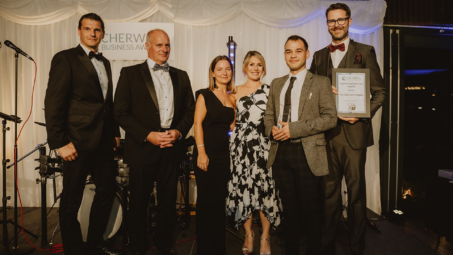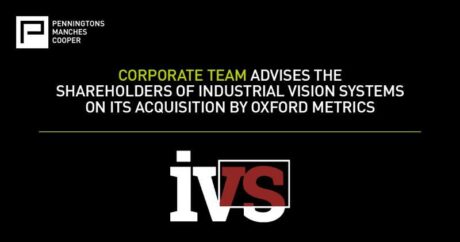
First Light achieves world first fusion result, proving unique new target technology
First Light Fusion (First Light), the University of Oxford fusion spin-out, today confirms it has achieved fusion. The UK Atomic Energy Authority (UKAEA) has independently validated the result.
This is the first time fusion has been achieved using the unique targets developed by First Light, and the corresponding projectile technology. First Light’s mission is to solve the problem of fusion power with the simplest machine possible. Projectile fusion is a new approach to inertial fusion that is simpler, more energy efficient, and has lower physics risk. First Light has achieved fusion having spent less than £45 million, and with a rate of performance improvement faster than any other fusion scheme in history.
Business & Energy Secretary, Kwasi Kwarteng, said:
“First Light Fusion’s British-born technology could potentially revolutionise power production in the coming decades. That is why this government is investing in UK science and innovation, ensuring that we remain at the forefront of the global scientific endeavour to make safe, clean, limitless fusion energy a reality.”
Projectile fusion offers a simpler, cheaper, faster approach to fusion
Fusion is the phenomenon which powers the sun. The challenge is to control the complexities involved in replicating this process to produce a clean, abundant but also commercially viable source of power.
First Light is taking a unique projectile fusion approach to solve this challenge, which it believes offers the fastest, simplest and cheapest route to commercial fusion power. This means that instead of using complex and expensive lasers or magnets to generate or maintain the conditions for fusion, First Light’s approach compresses the fuel inside a target using a projectile travelling at tremendous speed. The key technology in First Light’s approach is the target design, which focuses the energy of the projectile, imploding the fuel to the temperatures and densities needed to make fusion happen.
To deliver this fusion result, First Light used its large two-stage hyper-velocity gas gun to launch a projectile at a target, containing the fusion fuel. The projectile reached a speed of 6.5 km per second before impact. First Light’s highly sophisticated target focuses this impact, with the fuel accelerated to over 70 km per second as it implodes, an increase in velocity achieved through our proprietary advanced target design, making it the fastest moving object on earth at that point.
A key step towards a projectile fusion power plant
First Light’s power plant design involves the target being dropped into the reaction chamber and the projectile launched downwards through the same entrance, so it catches up with and impacts the target at the right moment [see https://www.youtube.com/watch?v=aW4eufacf-8 for visual representation].
The impact is focused and amplified by First Light’s advanced target technology, and a pulse of fusion energy is released. That energy is absorbed by the lithium flowing inside the chamber, heating it up. The flowing liquid protects the chamber from the huge energy release, sidestepping some of the most difficult engineering issues in other approaches to fusion. Finally, a heat exchanger transfers the heat of the lithium to water, generating steam that turns a turbine and produces electricity.
First Light’s equipment is relatively simple, built in large part from readily available components. First Light believes this approach accelerates the journey towards commercial fusion power as there is a large amount of existing engineering that can be reused to realise its proposed plant design.
A consumables business model and competitive LCOE
With this simpler approach that reuses existing technology, peer reviewed analysis[1] conducted by First Light shows that projectile fusion offers a pathway to a very competitive Levelised Cost Of Energy (“LCOE”) of under $50 / MWh, directly competing on cost with renewables. This would make it the most cost competitive source of baseload power.
First Light’s approach, centred around the sophistication of its target design, will also enable it to pursue a high value-added consumables business model (i.e. mass manufacture of the targets themselves), where it will partner with power plant operators and become the fuel provider in the form of the targets.
First Light believes this focus not just on the science, but also its future business model, presents another important point of difference, showcasing not just the environmental but also the commercial benefits of First Light’s approach to fusion power.
UKAEA validation
The UK Atomic Energy Authority (“UKAEA”), an executive non-departmental public body sponsored by the UK Government Department for Business, Energy and Industrial Strategy was invited to analyse and validate First Light’s fusion results before these were officially made public. The process included independent modelling of the detector configuration and response, review of all calibration data for both types of neutron detector used, review of the processing and statistical analysis of the data, full physical access to all detection equipment for hands-on inspection, and the witnessing of a fusion shot. This work has taken place over a period of over three months and UKAEA is able to confirm there is evidence that First Light has produced neutrons that are consistent with those produced from the fusion of deuterium fuel.
Next Steps
Plans for a “gain” experiment (more energy out than in) are advancing at pace. First Light expects to also partner with existing power producers to develop a pilot plant using its unique fusion approach. First Light is working towards a pilot plant producing ~150 MW of electricity and costing less than $1 billion in the 2030s. First Light is working with UBS Investment Bank to explore strategic options for the next phase of its scientific and commercial development.
Dr Nick Hawker, co-founder and CEO of First Light Fusion said:
“Our approach to fusion is all about simplicity. Being simple, we believe projectile fusion is the fastest path to commercially viable power generation from fusion. We aim for simplicity in the power plant engineering, but we also want to make the fusion process itself as simple as possible. The key technology is our target designs. As objects, these are very complex, but the physics is simpler than other fusion approaches; it can be understood and simulated accurately. With this result we have proven our new method for inertial fusion works and, more importantly, we have proven our design process. The design used to achieve this result is already months out of date. As soon as we reach the maximum with one idea, we invent the next, and that incredible journey of discovery is what is so exciting.”
Steven Chu, Jerry Chittenden, Richard Dennis, Richard Garwin, Sir David King, Arun Majumdar, Andrew Randewich, Steven Rose and Ron Roy, members of First Light’s Advisory Boards* said:
“We congratulate the First Light team on reaching this significant milestone. We have watched first hand as they have advanced along this path to fusion. First Light’s target designs are remarkable, and the team’s ability to accurately simulate and thus optimise their performance gives them an invaluable tool on the path to gain. That journey will undoubtedly involve many hurdles, but in reaching fusion, First Light’s technology has shown its merit.”
Professor Yiannis Ventikos FREng, Kennedy Professor, Head of Department for UCL Mechanical Engineering, and co-founder of First Light said:
“While achieving fusion in the lab is a tremendous success in its own right, the context is equally important. True to First Light’s rigorous scientific approach, this result is supported by strong and continuously evolving computer modelling. This capability sheds light, in exquisite detail, into the processes that generate these neutrons. Such tools are in daily use by First Light’s scientists, helping design unique targets, launchers and amplifiers, navigating the challenging path towards gain and a first-of-a-kind reactor. This pursuit of practical and affordable fusion will give us the clean and abundant baseload power that we so desperately need in our effort to address – and hopefully reverse – global warming.”
Bart Markus, Chairman of First Light Fusion, said:
“By focusing on an approach to fusion which is both simpler and cheaper than other fusion technologies, we believe we have identified a genuine route to commercial fusion, with a view to meeting not just vital scientific milestones, but also to develop a sustainable business model. Our unique target technology enables a business model based on consumables, which differentiates us from all other fusion technologies. This includes the manufacture and distribution of the targets themselves, using partners for the plant development largely borrowing from existing technologies. Our focus on the business model is equally important: fusion must show it is more than an expensive science experiment, but that it can be a commercial solution to the challenge of producing baseload clean energy”
Ian Chapman, UKAEA chief executive, said:
“Fusion promises to be a safe, low carbon and sustainable part of the world’s future energy supply, and we support all advances in this scientific and engineering grand challenge. These results are another important step forward, and we are impressed that First Light have arranged independent analysis of their result.”
FUSION FACTS
- First Light has shown the most rapid progress on fusion triple product of any project in the history of fusion
- The number of neutrons produced is low, around 50, however, this matches the predicted yield exactly
- The speed of the projectile is 6.5 kilometres per second, which is 14,500 miles per hour
- The fuel implodes at over 70 kilometres per second, over 6 times escape velocity
- The fuel is compressed to a pressure of 10 Terapascals, which is 100 million atmospheres, higher than the pressure in the centre of Jupiter
- The fuel capsule within the target is a few mm in size
- When it fuses, the fuel has been compressed down to less than 100 microns in size, smaller than the thickness of a human hair
- Our targets boost the pressure of impact by over 20 times
- In a power plant the process would be repeated every 30 seconds
- In a power plant, each target would release enough energy to power the average UK home for over 2 years
The need for fusion
- Global power demand is expected to double by 2040 and could increase fivefold by 2060 when new technologies enable the electrification of a wider range of applications, particularly important at a time of ongoing global energy insecurity and in the broader context of achieving critical net zero goals as part of collective efforts to address climate change.
- First Light commissioned research concluded that 19,900 TWh per year could be generated from wind and solar globally by 2040. This is an 8-fold increase on today but is still less than half of the projected requirement.
- So while the rapid and maximum deployment of renewables is key to achieving the 2050 Paris target, in several parts of the world wind and solar power alone will not be able to meet projected energy demand, opening up a market for clean baseload power to complement renewables.
- To mitigate the impact of climate change a large global market for baseload clean power will open up to complement renewables and that is where fusion energy will play a key role.
Penningtons Manches Cooper, who supported First Light Fusion on their recent $45 million Series C financing round, commented: “Congratulations to our client First Light Fusion who have achieved a world-first in achieving fusion with their projectile approach and unique targets. First Light’s mission is to solve the problem of fusion power with the simplest machine possible. We are proud to have supported them on their journey.”
More in Sustainability

Blenheim Palace named Sustainable Tourism Provider of the Year at UKinbound’s...
UKinbound, the UK’s leading travel trade association that represents the interests of the UK’s inbound tourism industry (international visitors) – which generated over £31 billion for the UK economy last year – awarded Blenheim Palace the accolade of Sustainable Tourism Provider of the Year at its Awards for Excellence ceremony on Thursday 26 September.

Engineering Excellence Sponsors return to Cherwell Business Awards
High Spec Composites Ltd are very proud to be returning sponsors of the Engineering Excellence category in the Cherwell Business Awards 2024. The Engineering Excellence Award is open to businesses of all sizes who are engineering and manufacturing quality products or components within the Cherwell District.

Art and design students team up with top sustainable fashion designers...
Oxford Brookes University students gained real life fashion industry experience by creating and building a set for two top British designers as part of London Fashion Week 2024.
From this author

PENNINGTONS MANCHES COOPER ADVISES THE SHAREHOLDERS OF OXLID ON ITS ACQUISITION...
The corporate team at Penningtons Manches Cooper has advised the shareholders of UK-based OXLiD on its acquisition by AIM listed Anglo-Australian battery innovator, Gelion.

PENNINGTONS MANCHES COOPER APPOINTED AS LEGAL ADVISOR TO ADVANCED RESEARCH +...
Penningtons Manches Cooper’s Birmingham and Oxford offices have been appointed as legal advisors to the Advanced Research + Invention Agency (ARIA), a new R&D agency built to unlock scientific and technological breakthroughs to benefit everyone.

PENNINGTONS MANCHES COOPER ADVISES THE SHAREHOLDERS OF MACHINE VISION TECHNOLOGY SPECIALISTS...
The corporate team at Penningtons Manches Cooper has advised the shareholders of machine vision technology specialists Industrial Vision Systems on its acquisition by Oxford Metrics PLC (LSE: OMG).


